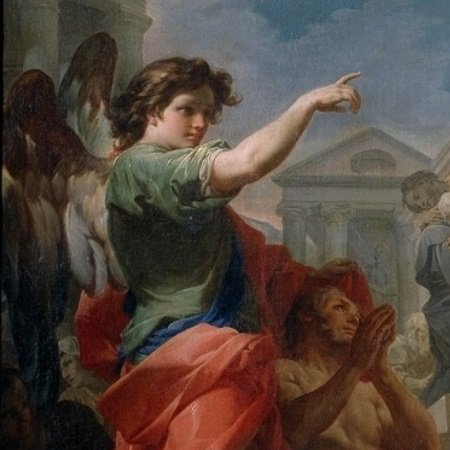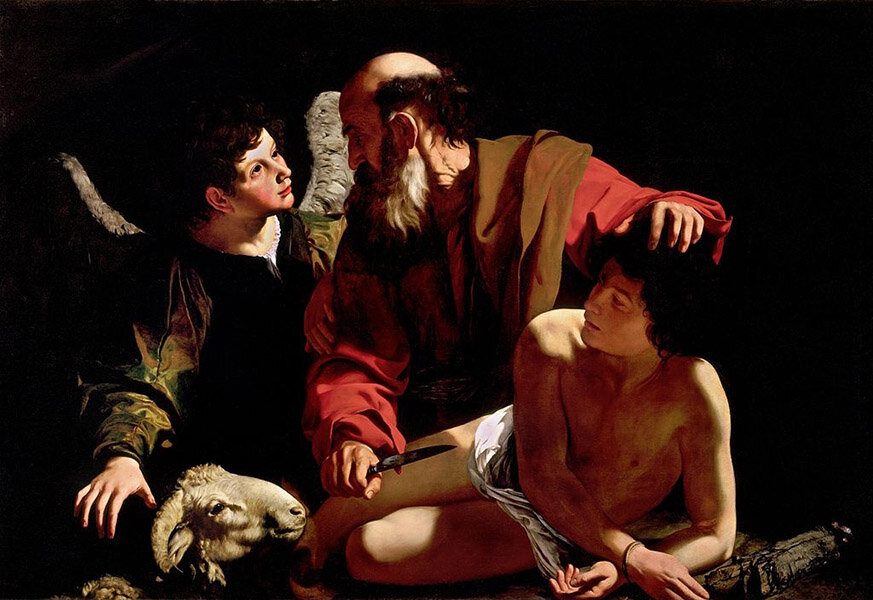
Blog

Making of a Painting V: The Dormition-Assumption
The fifth installment of our Making of a Painting series explores the fascinating history of artistic depictions of the Assumption of the Virgin Mary and details the compositional choices that went into making our own rendition at once strikingly original and yet firmly rooted in the tradition.

Making of a Painting IV: Nicholas Black Elk (2 of 2)
The conclusion to our article on Servant of God Nicholas Black Elk explains how we captured key aspects of his biography, his religious convictions, and his reputation for holiness in an original portrayal that pays homage to the enduring power of his story to inspire people across cultural boundaries.

Making of a Painting IV: Nicholas Black Elk (1 of 2)
The fourth installment of our Making of a Painting series focuses on our depiction of Nicholas Black Elk, whose cause for canonization was recently initiated. Part 1 provides a brief overview of his eventful life, controversial legacy, and contributions to the development of authentic Lakota Catholicism.

Making of a Painting III: Louis and Zélie
Unique challenges arise when a commission requires using historical photographs as references for sacred artwork. In this post, we explore how George and Polly navigated these obstacles to create a portrait of Louis and Zélie Martin that allows the saints’ heavenly glory to shine through their earthly likenesses.

Making of a Painting II: Our Lady of the Chariot
In this second post in our Making of a Painting series, we relate the historical background, sources of inspiration, and artistic processes involved in the creation of our monumental altarpiece, Our Lady of the Chariot. The project was one of the most compositionally complex we have tackled, but the result was rewarding.

Angels in Art (4 of 4): Compositional Devices
Part 4 examines the ways that painters have used angels as artistic devices to enhance their works' aesthetics, legibility, didactic effect, or emotional impact. We conclude by discovering that the art-historical principles elucidated in this Angels in Art series remain quite relevant to artwork being produced today!

Angels in Art (3 of 4): Narrative Roles
Part 3 of our Angels in Art series focuses on the roles that angels play in the stories that works of art are telling. These roles derive from the duties discharged by angels in the Bible, which can be classified broadly as attending to the divine throne and serving as intermediaries between God and human beings.

Angels in Art (2 of 4): Symbolism
In Part 2 of our series on angels, we consider how the different ways of representing angels throughout Christian history symbolically communicate theological truths about them. We discover that the artistic conventions are visual metaphors alluding to angels' spiritual nature, moral perfection, and God-given mission.

Angels in Art (1 of 4): Change over Time
In this first of a four-part series on Angels in Art, we explore how angels are described in the Bible and represented visually in Christian artwork. We trace the evolution of the major angel-related motifs over time and learn how this imagery eventually strayed far from its roots in Ancient Near Eastern cosmology.

Making of a Painting I: A Tale of Two Hearts
In her inaugural contribution to our Making of a Painting series, Polly recounts the conceptual work, compositional stages, and artistic process involved in the creation of a recently commissioned set of paintings, along with the factors that made this a particularly rewarding example of a fruitful collaboration between artist and patron.

Anatomy of a Painting I: Francesco Solimena’s Assumption
In this first of our Anatomy of a Painting series, we analyze the compositional devices and artistic techniques underlying Francesco Solimena's painting of the Assumption. Along the way, we gain insight into the venerable master's creative genius and learn lessons of on-going relevance regarding the ingredients of effective sacred art.

Sacred Art 101 (4 of 4): Types of Christian Artwork
In this final post of our introductory series, we bring together what we’ve learned so far to define four genres of representational Christian art. By studying each category’s distinctive purpose, characteristics, and appropriate context, we uncover a set of general principles that can guide a renewed flourishing of sacred art.

Sacred Art 101 (3 of 4): East vs. West
With our framework established and explained in previous posts, we are ready to put it to work to understand how two broad streams of Christian tradition have represented religious themes over the centuries. We find that Eastern and Western approaches to sacred art often achieve similar ends using divergent means.

Sacred Art 101 (2 of 4): Examples
In our previous post, we established a framework for analyzing works of art according to their style, subject matter, and mode. These distinctions are easier to understand when applied to concrete examples from art history. Here we find Western European and American paintings from the past millennium that exemplify different types of visual expression.

Sacred Art 101 (1 of 4): Terms and Framework
Redeeming the state of Western Christian art and preparing for a new flowering of sacred painting requires a return to the basics. In this series of posts, we will explore how effective artistic creations navigate the distinctions among content, style, and other properties in order to achieve their proper ends. This first post lays the groundwork by defining some key terms.
